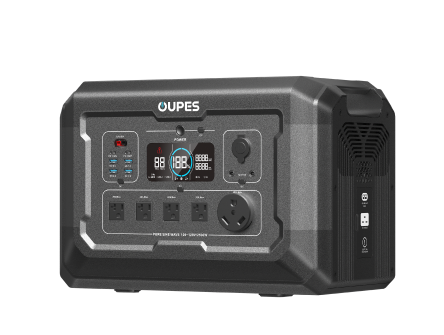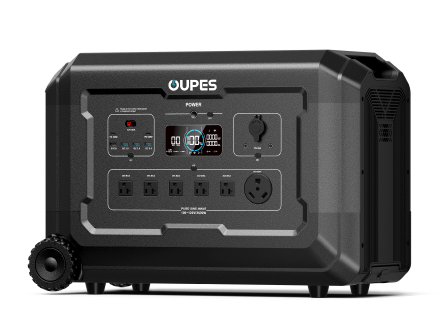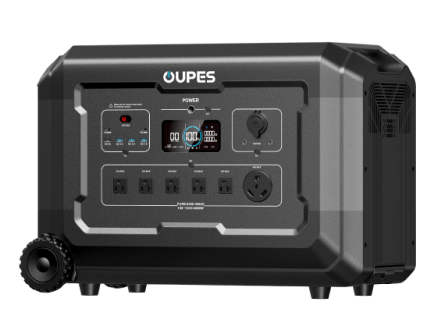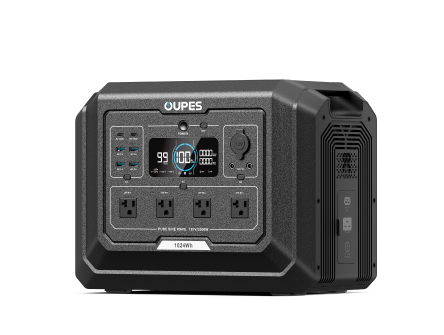
Solar-powered generators have gained immense popularity as a reliable, eco-friendly alternative to traditional gas-powered systems. But when you're investing in a solar generator—especially for backup power or off-grid living—understanding how long it lasts is a crucial piece of the puzzle. From battery cycles to solar panel degradation, several factors influence the longevity of these generators. If you're wondering whether a solar-powered generator can truly stand the test of time, read on—you may be surprised by just how durable these systems can be.
Whether you're planning for emergencies, camping off-grid, or powering your home during outages, knowing what to expect from your generator's lifespan ensures that your investment is both practical and long-lasting.
Understanding the Lifespan of Solar Generator Components
To accurately assess how long a solar-powered generator lasts, it's important to look at its individual components—mainly the battery, inverter, and solar panels. Each plays a critical role and ages differently depending on usage, environment, and quality.
The heart of any solar generator is its battery. Most high-quality generators today use lithium iron phosphate (LiFePO4) batteries, which typically have 2,000 to 5,000 life cycles. One cycle is defined as a full 0% to 100% charge and discharge. Depending on how frequently you use your generator, this could translate to anywhere between 5 to 15 years of reliable service. For instance, if you're using your solar generator for weekend getaways, you'll likely get well over a decade of use.
The inverter, responsible for converting DC power from the battery into AC power for your devices, usually lasts 10 to 15 years. As for solar panels, they have the longest lifespan among all components. Most solar panels come with a performance warranty of 25 to 30 years. Even after three decades, they may still produce up to 80% of their original efficiency.
When these components are built with premium-grade materials and housed in a well-designed system—such as OUPES solar generators—the entire system can be expected to perform efficiently for many years.
Factors That Affect a Solar Generator’s Longevity
Several variables impact how long a solar-powered generator will last. Knowing these can help you better maintain your generator and maximize its usable life.
First, usage frequency is a major factor. A solar generator used daily will naturally age faster than one used occasionally. However, consistent moderate use is often better for lithium batteries than leaving them idle for long periods.
Second, temperature plays a big role. Extreme heat or cold can degrade battery efficiency and shorten lifespan. Ideally, you should store and operate your generator in a climate-controlled or shaded environment to minimize wear and tear on the battery and inverter.
Third, charging practices matter. Overcharging or completely depleting the battery regularly can reduce its life. Most modern solar generators come equipped with battery management systems (BMS) to prevent such damage, but responsible use still helps.
Fourth, the quality of the components themselves—especially the battery and inverter—has a massive impact. Investing in a reputable brand like OUPES ensures you're getting industry-leading quality that’s built to last.
Lastly, maintenance and care can't be overlooked. Keeping your generator clean, dry, and free of dust, and running it occasionally even during off-seasons, helps maintain its longevity and ensures it's ready when you need it most.
Battery Lifespan: The Core of Your Solar Generator
Because the battery is the primary component that determines a solar generator's lifespan, understanding how it works and how it degrades is essential.
As mentioned earlier, lithium iron phosphate (LiFePO4) batteries are known for their exceptional cycle life and stability. Unlike older battery chemistries such as lead-acid or standard lithium-ion, LiFePO4 doesn’t suffer from rapid degradation. With 80% capacity remaining even after thousands of cycles, these batteries are ideal for long-term, high-frequency use.
But it’s not just about cycle count. Depth of discharge (DoD) also matters. The deeper you discharge the battery each time, the fewer cycles it will last. That’s why many users operate their generators within a moderate discharge range—say from 20% to 80%—to prolong lifespan.
Charging speed also plays a role. Fast charging can heat up the battery and degrade it faster over time. That’s why high-end solar generators incorporate smart charge controllers and thermal regulation features. OUPES solar generators, for example, are designed with advanced battery management systems to ensure optimal charging conditions and protection from overcurrent or overheating.
Ultimately, a well-cared-for LiFePO4 battery can easily last over a decade of consistent use. Understanding your generator’s battery specs will give you clear expectations of what kind of performance and longevity to expect.
How Solar Panel Degradation Influences Long-Term Use
While batteries may need replacement after 10-15 years, solar panels can often last 25 years or more. However, they do experience gradual degradation that affects output over time.
On average, most solar panels degrade at a rate of about 0.5% to 1% per year. That means after 20 years, a panel could still be operating at around 80% of its original efficiency. This slow degradation is usually factored into manufacturer warranties, which typically guarantee 80% output after 25 years of use.
Several factors influence panel degradation: UV exposure, thermal cycling, mechanical stress from hail or wind, and even salt corrosion in coastal environments. That said, high-quality panels housed in a portable solar generator system are often more protected than rooftop panels and may degrade more slowly as a result.
It’s important to regularly inspect your panels for any physical damage or dirt buildup. Keeping them clean and well-positioned will help them capture maximum solar energy and offset any loss in efficiency due to age.
As the long-term energy source for your generator, solar panels are one of the best-performing and most durable components of your system. While they might not last forever, their longevity far exceeds that of most battery systems and continues to provide value for decades.
Signs That It’s Time to Replace or Upgrade
Even the most robust solar-powered generator will eventually begin to show signs of aging. Knowing what to watch for can help you plan ahead and avoid unexpected downtime.
Reduced battery performance is usually the first indicator. If you notice that your generator is holding less charge than before or runs out of power much quicker under the same loads, it’s a clear sign the battery is degrading. In some cases, a replacement battery can breathe new life into your system without needing to purchase a whole new generator.
Inverter inefficiencies can also crop up over time. If your generator struggles to deliver consistent AC output or starts overheating during regular use, it may be time to inspect or replace the inverter module.
Solar panel inefficiency is harder to spot since it’s a gradual process. However, if you notice charging taking significantly longer even on sunny days, it might be due to panel degradation or obstruction. A professional evaluation can determine whether panel replacement or reconfiguration is needed.
Fortunately, many premium solar generators are designed for easy maintenance and modular replacement. OUPES models, for instance, feature upgradeable batteries and input ports compatible with newer solar panel technologies, allowing users to extend the life of their generator through targeted upgrades.
Conclusion: Getting the Most From Your Solar Generator Investment
Solar-powered generators are built for durability and efficiency, but like any long-term investment, their performance depends on how well you care for them. From understanding battery chemistry and inverter quality to being mindful of environmental factors and usage habits, there are many ways to prolong the lifespan of your generator.
With proper care, a high-quality system like those from OUPES can last well over a decade, providing clean, quiet, and renewable energy through thousands of charge cycles. While batteries may need replacement sooner than solar panels, thoughtful use and timely upgrades can ensure your generator remains a reliable power source for years to come.
As solar technology continues to advance, future upgrades and integrations will only improve the performance and lifespan of portable solar generators, making them an even smarter investment for off-grid living, emergency preparedness, or sustainable energy solutions.




























